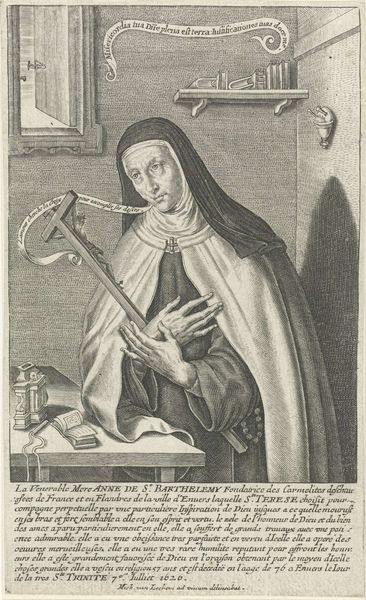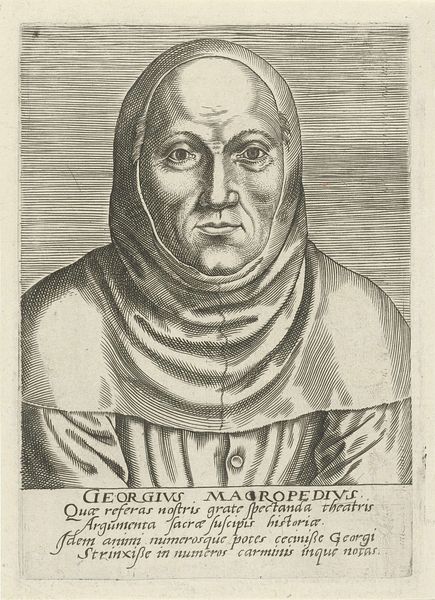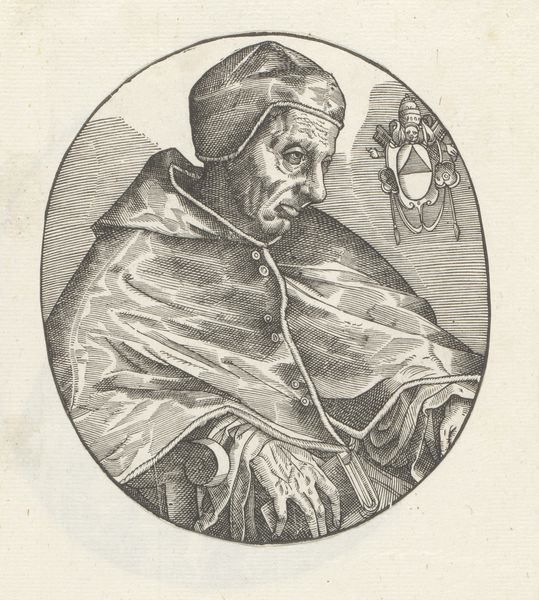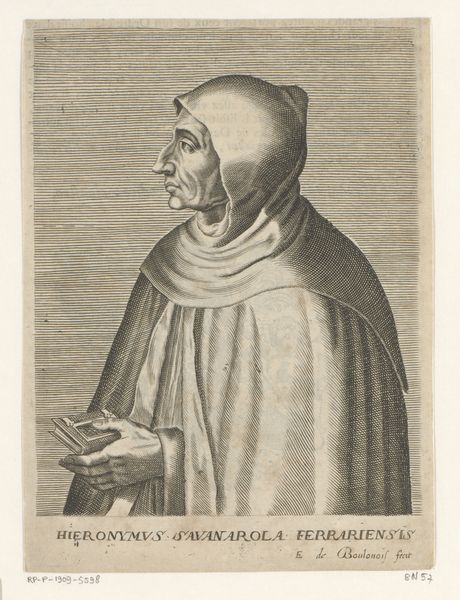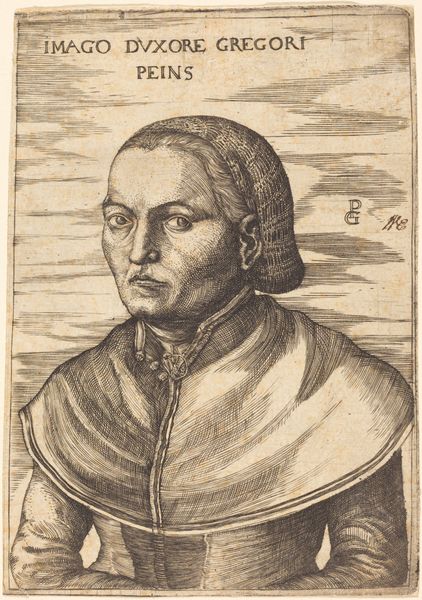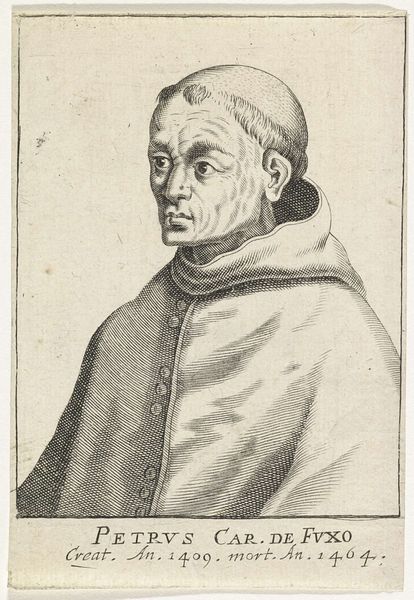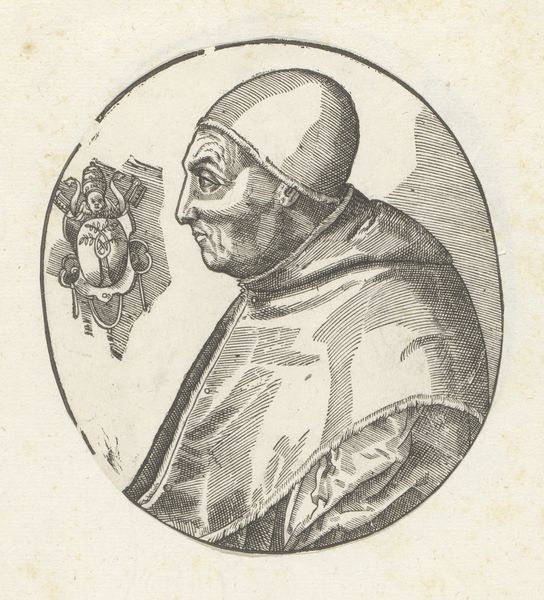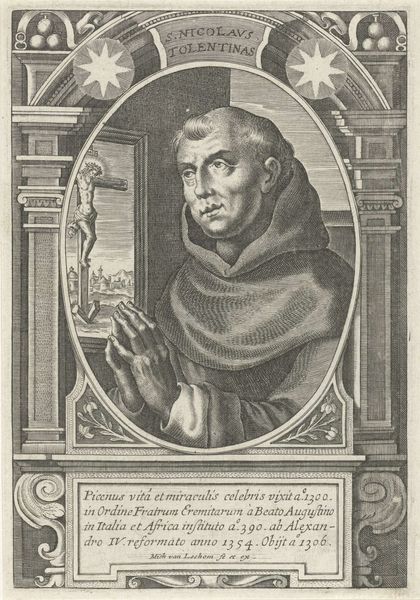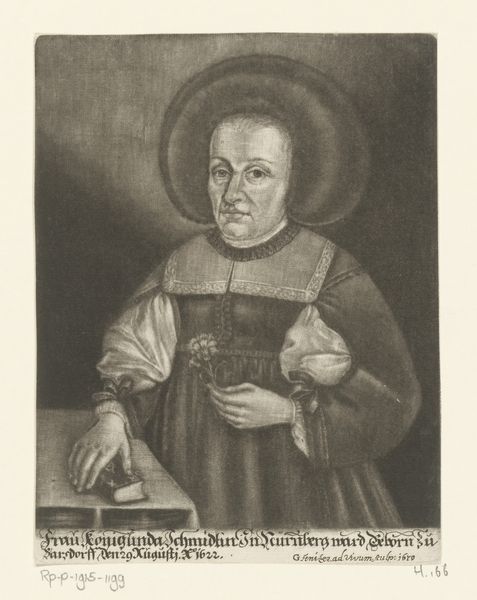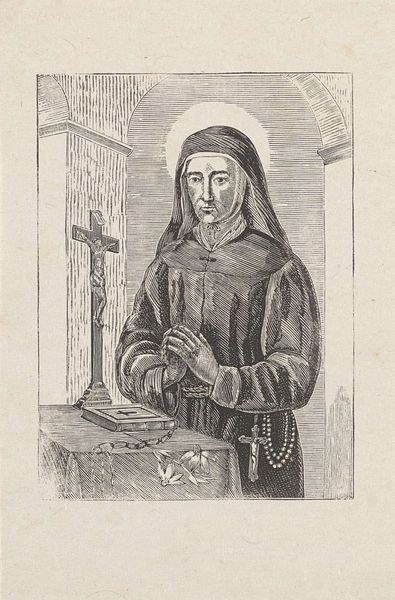
print, engraving
#
portrait
#
pencil drawn
#
baroque
# print
#
pencil sketch
#
old engraving style
#
caricature
#
portrait drawing
#
pencil work
#
history-painting
#
engraving
Dimensions: height 184 mm, width 138 mm
Copyright: Rijks Museum: Open Domain
Curator: What strikes me immediately is the austerity, the simplicity of the lines giving the portrait a somber, almost severe mood. Editor: Indeed. The Rijksmuseum holds this engraving, "Portret van Broer Cornelis," or Portrait of Brother Cornelis, dating back to somewhere between 1607 and 1677, by Christoffel van Sichem I. As the inscription states, Cornelis van Dordrecht was a preacher in Bruges. The print situates him within very specific cultural and historical frameworks of religious life. Curator: You're right; looking closer, I am curious about this austere representation. The textures created through the engraving highlight the rough fabric of his habit and the aged quality of his face. It contrasts rather markedly with the more idealized portraiture that we see elsewhere in Baroque period, especially those commissioned by royalty and nobility. Is this a choice intended to reinforce an image of religious piety, rejecting excess? Editor: It’s highly probable. Religious orders often employed visual strategies emphasizing humility and service. His dress code and the presence of the Bible suggests a deep connection to religious knowledge and practice. Moreover, look at the scene depicted in the background! It portrays an interaction between multiple people, possibly representing religious stories, as opposed to personal events. The whole setting speaks volumes of his socio-political world, in the 17th century. Curator: And he is holding that…is that a discipline? Is it meant to signify self-mortification? What are the politics involved? What commentary can we build about the religious orders? Were they being questioned by the people in power? Was this their way of resisting, if in fact that is the case? Editor: Those are excellent questions. His portrait, indeed, raises questions about the Church's visibility in public life and invites inquiry into issues related to religion and moral leadership in Dutch society at the time. Further research should reveal insights into broader cultural issues shaping society. Curator: Thank you. Viewing "Portret van Broer Cornelis" has certainly expanded my understanding of visual narratives that the religious figures presented in Dutch Golden Age, inviting nuanced interpretations about how individuals navigate complex dynamics that shape human lives. Editor: Absolutely, understanding the role institutions play helps contextualize the individual. Thanks to our collaborative inquiry.
Comments
No comments
Be the first to comment and join the conversation on the ultimate creative platform.

